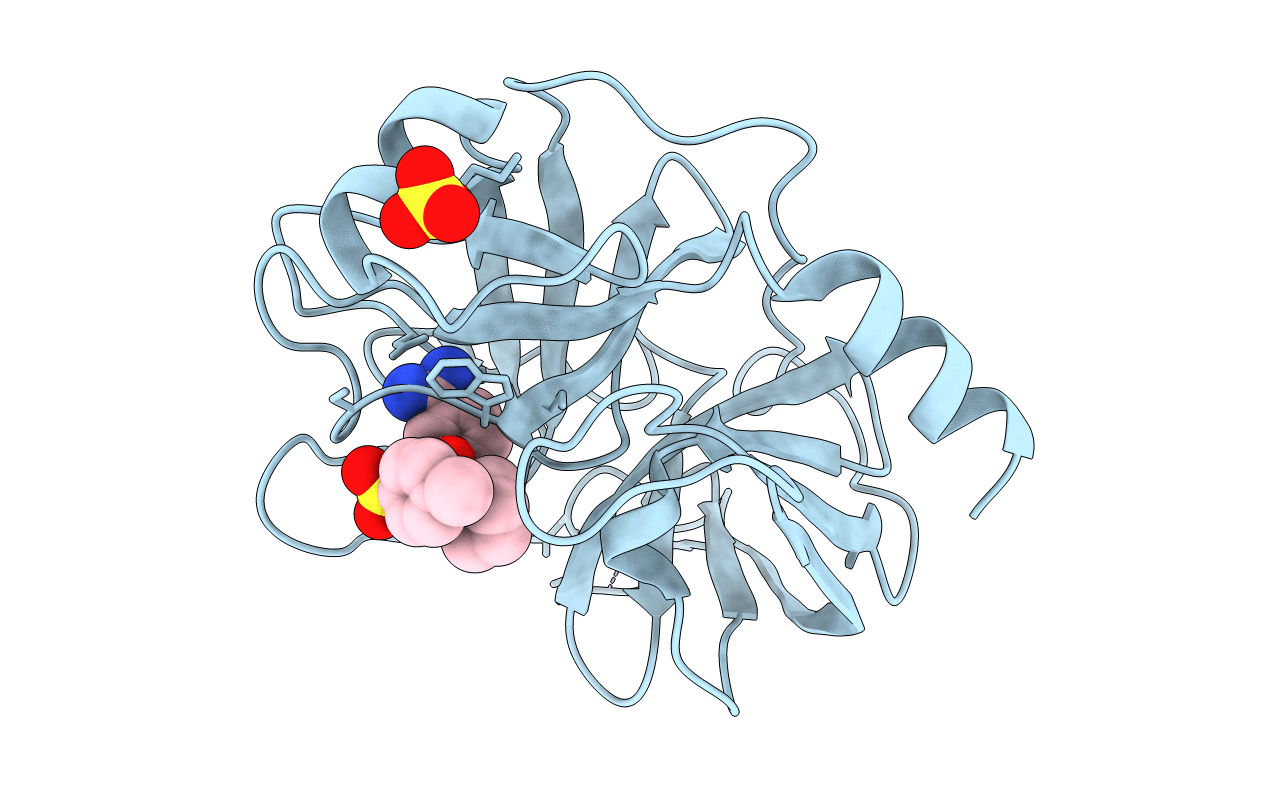
Deposition Date
1991-10-24
Release Date
1994-01-31
Last Version Date
2024-10-16
Entry Detail
PDB ID:
1PPH
Keywords:
Title:
GEOMETRY OF BINDING OF THE NALPHA-TOSYLATED PIPERIDIDES OF M-AMIDINO-, P-AMIDINO-AND P-GUANIDINO PHENYLALANINE TO THROMBIN AND TRYPSIN: X-RAY CRYSTAL STRUCTURES OF THEIR TRYPSIN COMPLEXES AND MODELING OF THEIR THROMBIN COMPLEXES
Biological Source:
Source Organism:
Sus scrofa (Taxon ID: 9823)
Method Details:
Experimental Method:
Resolution:
1.90 Å
R-Value Work:
0.16
R-Value Observed:
0.16
Space Group:
P 21 21 21


